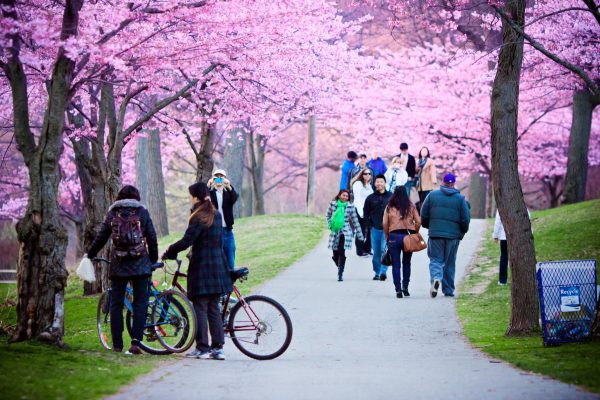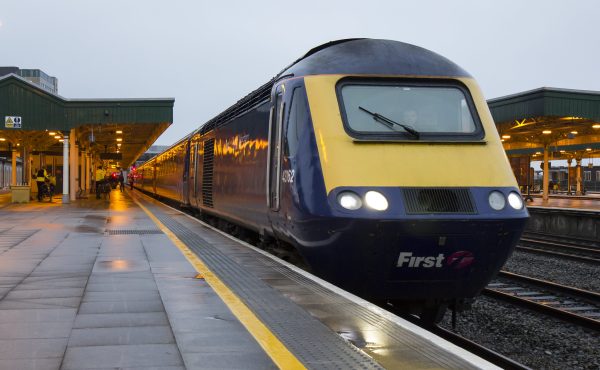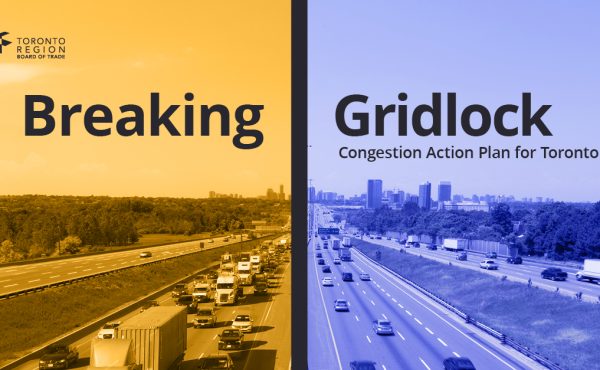It’s a beautiful Sunday morning in High Park, cyclists are lapping the loop while families stroll along the winding sidewalks. There isn’t a car in sight, but not everyone is happy about that. Since weekend car access was banned in 2020, “High Park Access for All” protestors have argued that cars are essential for accessibility. While seemingly well-intentioned, these claims misuse accessibility language to divide transit and disability advocates, aiming to restore a car-centric status quo.
The accessibility of our streets and public spaces affects all Torontonians, and critics of car-free High Park rightly point out the lack of accommodations.
In 2021, the City launched the High Park Movement Strategy (HPMS) to evaluate potential road closures and address mobility issues. Following months of public consultation, the current strategy allows for one-way weekday traffic and no private vehicles on weekends. In addition, some roads within the park are now permanently car-free. However, the proposed year-round bus service meant to offer universal accessibility and accommodate people with disabilities has still yet to come, leaving many Torontonians with few options for getting to the park.
As someone who goes to High Park four to five times a week, I can attest that there’s a lot to be desired in terms of accessibility. The park has become a hub for recreational sports clubs, but the lack of separated pathways, crisscrossing cycle tracks, and unclear intersection rules have led to conflicts between different user groups. I’ve been witness to, and frankly part of, many near-misses myself.
One cyclist has already died this year after swerving to avoid a child. Adding cars back into the mix would undoubtedly only increase the chaos.
“I don’t feel safe anytime wherever there is a car involved,” said Daniella Levy-Pinto, a pedestrian advocate with Walk Toronto.
Levy-Pinto, who is completely blind and uses a guide dog, explains that she has always visited High Park without a car but recognizes that current issues are “the failure of the city to provide a real accessible alternative for people for whom the only means of accessing the park is a motorized vehicle,” however, “going back to allowing cars is not the real answer.”
Most park users with disabilities agree with Levy-Pinto on the need for car-free spaces. The 2022 HPMS engagement report showed that those with disabilities supported strategies to ban visitor vehicles and that 51% ranked direct vehicular access as their lowest priority.
We need to be purposeful about how we build accessibility into our cityscapes. The process of inclusive and universal design starts at the very beginning.
Despite proposing solutions, in High Park’s case, the City of Toronto failed to deliver the necessary services — specifically, a regular, accessible, and reliable shuttle bus. By not incorporating accessibility from the start of infrastructure modifications, the city has allowed opponents to misappropriate accessibility as an argument for vehicle necessity.
Levy-Pinto highlighted that the best way of getting ahead of these false narratives is to take accessibility seriously and eliminate roadblocks for people with disabilities so that “improvements for some do not become barriers for others.”
Toronto is facing a climate and road safety crisis as we struggle to meet our TransfromTO and Vision Zero goals. We must address accessibility while simultaneously shifting away from car dependency.
High Park and complete street projects like Bloor West have become the battlegrounds of road usage between some motorists and active transit users, especially amid reports of new provincial legislation prohibiting the conversion of car lanes into bike lanes. Supporters of bike lane removal have long cited accessibility as one of their primary concerns, and it’s conceivable that Premier Ford may attempt to weaponize accessibility as a political ploy to support this legislation.
The lack of accessibility in Toronto is a serious issue that affects everyone at some point in our lives. We will find our solutions by talking to disability advocates, conducting meaningful engagement, and ensuring that accessibility is the baseline for new planning projects.
Most car infrastructure was never designed to serve the disability community. Unless our goal is to increase the number of people disabled through preventable crashes, we will not find our solution behind the wheel.
Jessie Ye is a co-ordinator with Community Bikeways, a ride leader with the Saddle Sisters of High Park, and a member of the High Park Rogue Runners.




